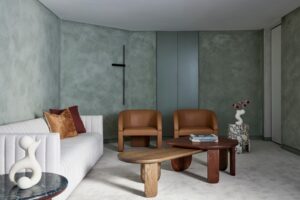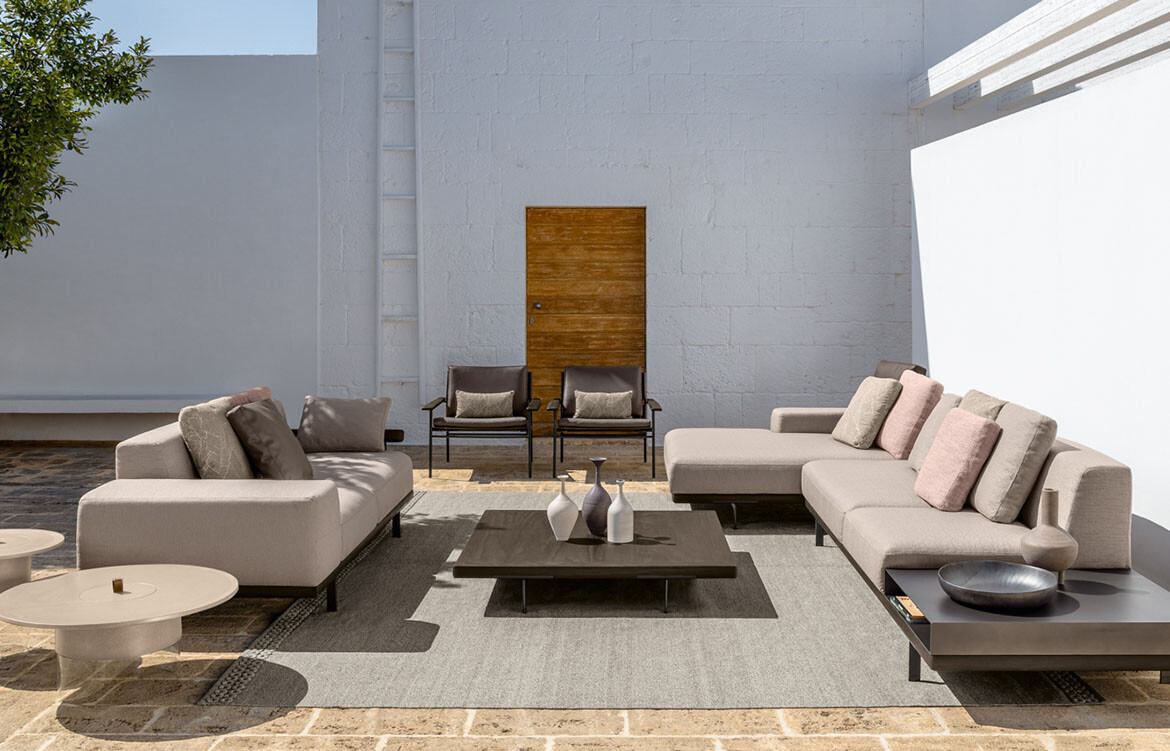Architecture, for Michael, is rational, and art free but the two disciplines are not so distinct in practice, one playing into the other in various ways. “There is an openness and degree of exploration and playfulness required to understand the potential of a place. For me this feels like art,” says Michael.
-You are a painter and architect, how do you juggle the two? Is one more dominant in terms of your time?
I’ve always mixed my time between art and architecture. Even for a job at university I use to stay at my parents beach house over summer and surf and do paintings while my mates worked 9-5 office jobs in town. I think right now I would say I devote most of my time to architecture. I work four days a week as a designer at StudioPacific architecture in Wellington, and 1 ‘flexi day’ a week as an artist. My ‘flexi day’ is when I just do art. It’s the highlight of the week, an amazing day, and I get in a good creative headspace.
-In what ways do you have to adapt your frame of mind frame when switching between the two and applying yourself to each discipline? Can you tell us about the overlap, and/or differences?
For me, I find architecture very rational. At its core principle it’s a spatial science dedicated to designing and understanding physical spaces for people to live, work and play in. Good and bad architecture affects how people live and behave, and as a result architecture is a design discipline full of many rules (to make sure we don’t mess with peoples’ lives).
Art on the other hand is free. I see art operating in a realm of possibility. It’s exciting. Your mind has the freedom to explore whatever ideas it wants and without boundaries, but conversely, in art you can set boundaries as you are ‘in control of your controlling-ness’ so to speak.
I guess the overlap of the art mindset into architecture is when there are problems that have no clear solution. For example, at work I enjoy doing urban design and master planning of townships, we are often asked questions like
‘What would you change if you could do anything to make this place better?’
There is an openness and degree of exploration and playfulness required to understand the potential of a place. For me this feels like art.
-Are there clear influences in your painting from architecture, or vice versa? Can you tell us about a specific example in a project or painting?
My true enthusiasm for art is inspired by the ‘out doors’. There is a patterned randomness in the natural environment that appeals to me. It’s like watching clouds or waves – they are periodical but each one is unique. I find painting such an effortless way for me to connect with those inspirations. The colours firstly, then light, and abstraction can flow freely from my thoughts onto a blank surface. Painting is an honest childish practice, and I like that.
I think studying architecture has given me a particular interest with objects in space, in particular how they are positioned within the landscape. Architecture has helped me believe that relationships between objects and spaces can influence our behaviour. This has influenced my art as I feel my level of thinking towards how I understand or interpreting figures in their context has grown. This is probably reflected in the compositions of my artworks – but I guess that’s open to interpretation.
-Where are you based, and how does the local landscape and environment feed into your work?
At the moment I live in Wellington. I’ve lived there for 8 years, but for the first 18 years of my life I grew up in Auckland. This was where art began for me. Interestingly enough, the scenes or ‘geographic resemblance’ of my artworks have followed my move down to Wellington. When I look back on my works there are themes that relate to where I’ve been living, and most importantly to where I’ve had a strong connection with a place. I’ve been to many places where despite knowing the landscape would make an amazing picture if I painted it, the feeling to create an artwork afterwards depends on whether I feel a sense of place or belonging to that area. For some reason I still haven’t painted a Wellington scene yet but I’m getting close.
-Is there one practice you prefer over the other?
Not at the moment. My enthusiasm to each practice shifts depending on which project is most exciting at the time. Often spending too many days in a row working on either practice is enough to sway me. It’s a fantastic position to be in.
-Do you know many architects who paint or draw? Do you see this relationship between architecture and art often as an architect?
One of the directors at my firm is a closet painter and surfer. I get on well with him. When he’s designing you can see in the way he draws on paper that he’s thinking about more than just architecture and buildings. It’s like I mentioned earlier, architecture can be very logical so it’s refreshing when this mentality to designing is softened by the freedom of an artist’s mindset.
-Who inspires you? In both practices.
I am aware of how architecture can be subjective in terms of what forms and styles appeal to different people. So in terms of what inspires me in architecture I would say that it’s the architectural writers rather than sculptors. Donald Appleyard and Jane Jacobs both had a lot to say about the way we design cities, its affects on ‘community’, and what makes places feel belonged to or have a sense of place. It’s that kind of philosophical thinking that gets me excited about architecture.
My grandfather was an artist also. He moved here from China when he was young and brought with him a skill for Chinese watercolours. He used to sit in on art classes at Auckland University where he learnt about abstraction and modern art. When I was a kid I enjoyed rummaging through his old dusty garage and studio and finding brilliant colourful artworks on old Chinese scroll paper. And lots of goldfish paintings. Seriously there were a lot of them but each one slightly different. Growing up my family were privileged enough to have a beach house on the east coast, this is where I fell in love with surfing. This in turn led to road trips and adventures and a new relationship with New Zealand’s landscape. Every time I get out of the city there is a part of me that lights up. The more I experience the landscape and explore this through art, the more I feel connected with it. That’s probably called the ‘inspiration’.
Photography by Michael Lowe
Images courtesy of Michael Lowe
Michael Lowe
michaellowe.co.nz
Tess Ritchie





















